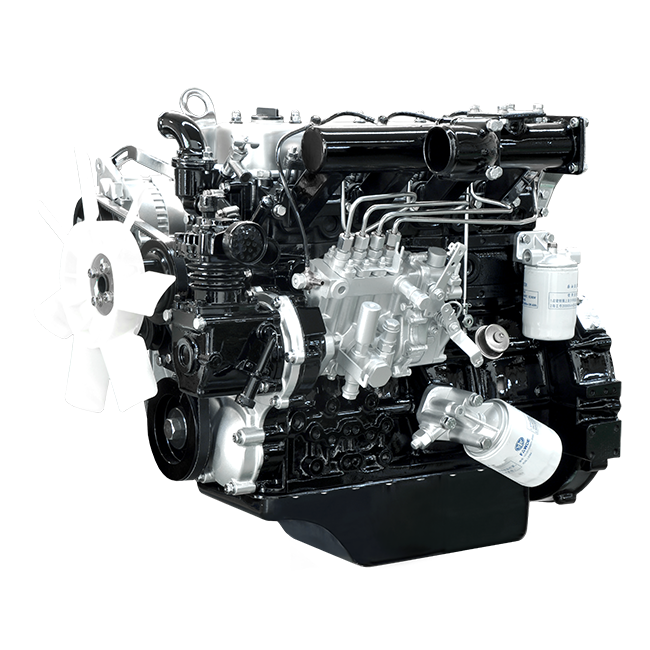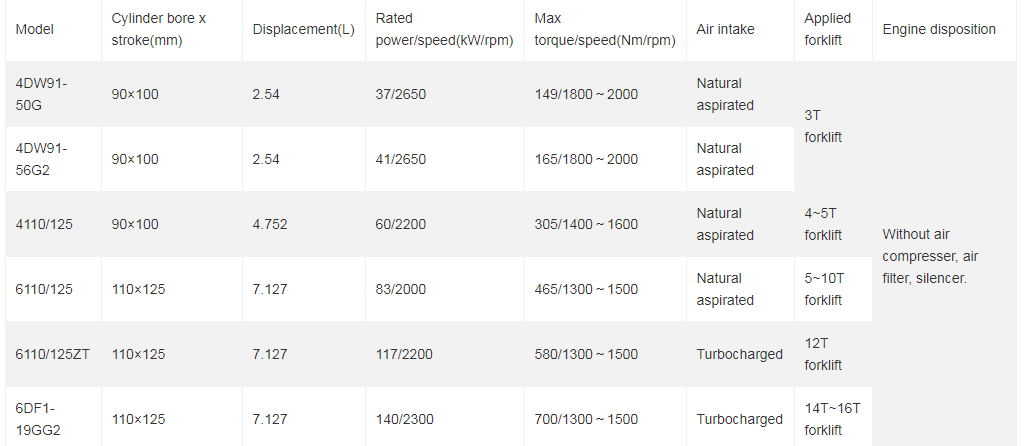The most common type of forklift engine is the internal combustion engine, in which fuel is burned in an enclosed space to create the pressure that turns the piston. These types of engines usually use natural gas or diesel fuel. LPG (liquefied petroleum gas) is also used as an alternative fuel for these types of engines in some countries because of its lower cost compared to other fuels and applications.
Ever need to ask, "What is the engine in my forklift?" If your forklift has a nameplate, the easiest solution is to gather the model and serial numbers of your machine and then Google for the correct engine specifications. If you can't find the correct spec sheet, contact the forklift manufacturer or your local dealer for assistance. If not, don't worry! We have a solution.
What type of fuel does your engine accept?
First, we need to determine the type of fuel your truck is running. Look at the fuel tank cap and there should be a warning sticker decal indicating the type of fuel your truck accepts. If your machine does not indicate the type of fuel it accepts from the fuel cap, check the engine for spark plugs. If so, then it most likely accepts LPG/propane or gasoline. The fuel type may be stamped on the engine. We also check this when we look for the model and a serial number of the engine.
Diesel Forklifts - More Power at Your Disposal
Nothing gives you the same power as a diesel engine forklift. Diesel forklifts typically outperform the power and torque of other types of forklifts, making them the natural choice for the most intense jobs. Construction sites and large shipyards are perfect for diesel forklifts.
Choose a diesel engine forklift when
Your workload will exceed 7,000 pounds.
You need extra torque to move over sloped surfaces or rough outdoor terrain.
You will need to use attachments such as clamps, dumpers, or spreaders for heavy work.
Do not choose a diesel-engine forklift if
You need to work in close proximity to other people or be inside at all.
Going "green" is a priority for your business.
Learn more about diesel forklifts
fork lift engines
Propane Forklifts - Clean Burning Efficiency
Propane powered forklifts sit somewhere in the middle of the two extremes of electric and diesel-powered forklifts. Like diesel trucks, they have excellent lift capacity and can always run at full capacity from a full tank to an empty tank. Like electric trucks, propane forklifts can avoid dangerous exhausts. When properly maintained and paired with a catalytic converter, they can even be used indoors for short periods of time.
Choose a propane forklift if
You want a forklift that can work for long periods of time without having to refuel for long periods of time.
You want to take advantage of the energy tax credit for clean-burning equipment.
Do not choose a propane forklift if
The rear propane tank on the forklift may pose a safety issue to other equipment or hazards.
You do not have enough storage capacity for unused replacement propane tanks and empty propane tanks.
ELECTRIC FORKLIFTS – THE CLEANEST, QUIETEST MOVERS
Unlike internal combustion engines, the only fuel source electric forklifts need are their rechargeable batteries. That means no space needed for extra fuel storage, no risk of spilling flammable materials, a quieter engine, and no emissions. The downsides of electric forklifts are in their lower workload relative to bigger IC engines.
electric forklift if:
All your work is going to be done indoors, like in a warehouse, retail stocking, or factory.
You need equipment that runs more quietly.
A low cost of ownership over time is a high priority.
Don’t choose an electric forklift if:
You need a forklift that can regularly lift loads of more than 6,000 lbs.
You need equipment that can move over rugged terrain or on graded surfaces.
You can’t dedicate time (usually at least 6 hours) for recharging periods at night.
If your forklift accepts LPG/propane as a fuel source, it will have a tank bracket and hose connection, usually located on top of the counterweight at the rear of the machine.
Check the engine make, model and serial number
The next step in identifying your forklift engine is to find the make and model name on the front of the engine. This information is usually printed on a nameplate or sticker located near or on the valve cover.
The sticker also tells us what type of fuel the forklift uses. If you have an older forklift and can't seem to find the engine model or serial number. You will probably have to turn to your local supplier.
Use the information you've been given to do your research
Now that you have identified the fuel type, engine model and engine series. Open your favorite search engine and type in "fuel type + model" without quotes.
The information we have provided in this article should help you determine what type of forklift engine you have. Whether gasoline, diesel or LPG/propane powered, if your model and serial numbers are specific enough to show up on a search engine, you will have the opportunity to learn more about the specifications of your machine.
By knowing exactly how to best serve the fork lift engines that powers your business, which can be time consuming, may save you money! If not, don't worry - just give us a call and our team will take care of everything for you.
Copyright:@2020-2021
Comments Please sign in or sign up to post.
0
0 of 500 characters used